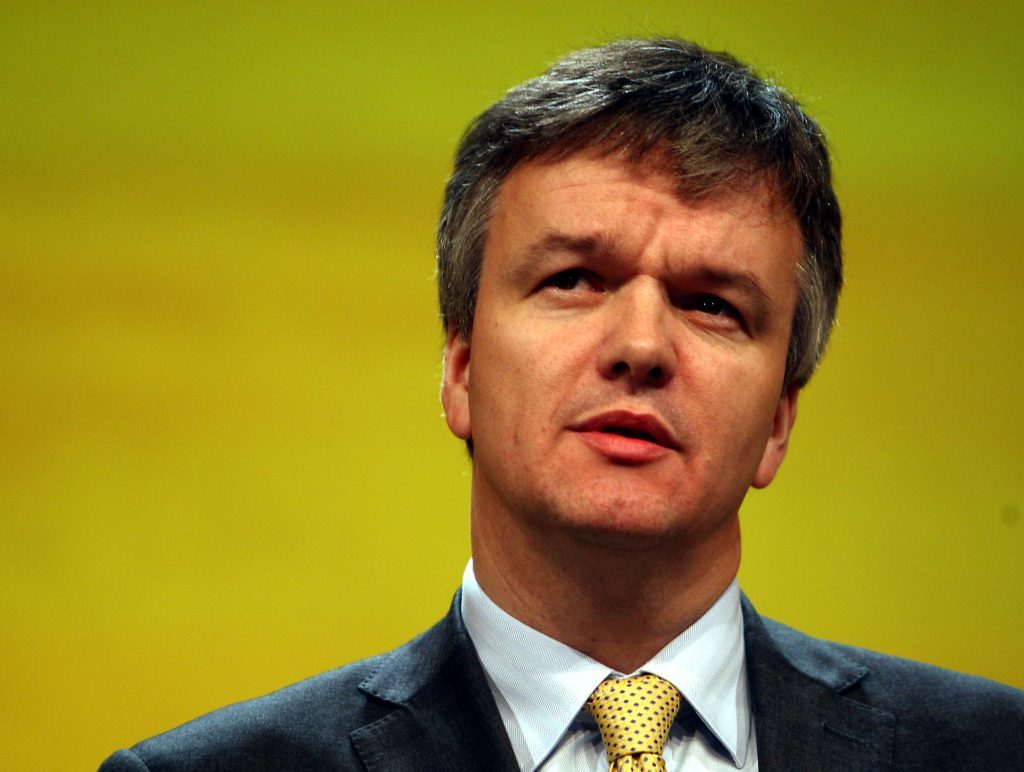
ONE of the architects of the 2014 indyref agreement has raised the prospect of big businesses relocating to Scotland if it stays in the EU.
Writing in The Sunday Post, former Scottish Secretary Michael Moore said many firms would be considering “what opportunities might there be for Scotland if it were continuing in the EU, while the rest of the UK left”.
Nicola Sturgeon has vowed to try to keep Scotland in the EU after voters north of the Border voted overwhelming in favour of Remain in last week’s crunch referendum.
The First Minister has said a fresh independence referendum which would achieve this is “highly likely” but has pledged to explore other ways of keeping Scotland in.
Senior figures in the financial services sector have told The Sunday Post a Scotland still in the EU is an attractive proposition.
One source said: “The EU membership issue is a game changer. So many firms use the UK, primarily London, as a gateway to Europe because of the single market and ease of travel.
“If – and it is still a big if – you can still be in the EU through Scotland, which has the skilled workforce and infrastructure – particularly in Edinburgh – then you have to give that serious consideration.”
And Gordon MacIntyre-Kemp, chief executive of pro-independence group Business for Scotland, said: “I am already hearing rumours from contacts in London that big financial companies are instructing lawyers to look at Edinburgh as a hub.”
Much of the case for independence in 2014 was made on the back of the strength of the oil and gas industry.
With the collapse in the price of oil, there have been huge concerns about how an independent Scotland could thrive without the tax revenue from this industry.
An influx of firms basing themselves in Scotland could create a jobs boom, it is claimed.
But a huge array of questions still need to be answered ahead of any second independence referendum, such as what currency and central bank the country would use.
David Watt, executive director of the Institute of Directors in Scotland, said: “I don’t think there will be many businesses excited about the prospect of another referendum of any description.
“But you could make a case that in a situation where Scotland is still in the EU it makes this country a more attractive proposition for businesses, particularly those south of the border. However, there are a lot of ifs and buts.
“We’d need to see more concrete evidence that an independent Scotland would remain in the EU.
“Any such talks would be taking place at the same time as the UK Government is negotiating its way out of the EU – it’s incredibly messy.”
In my view
By Michael Moore, Former Secretary of State for Scotland and senior adviser on devolution at PwC
On Friday morning the Prime Minister resigned but by late morning the news only ranked third in the national bulletins.
It was a quite extraordinary day.
The first question business leaders have been asking me is, “can another referendum actually happen?” This depends on a complex mix of politics and law.
When I negotiated the framework of the last referendum with Nicola Sturgeon it was based on a recognition that while the Scottish Government had a political mandate, the Westminster parliament had the constitutional power.
So Westminster passed one-off, time-limited powers to Holyrood, which meant the referendum was ‘Made in Scotland’.
The SNP’s view is they have a renewed mandate now that there has been “a significant and material change” in Scotland’s political situation, as fore-shadowed in their manifesto.
Others challenge this, but the First Minister has said she is drafting legislation, most likely based on the previous Act, and she does not expect Westminster to stand in her way.
Time will tell if that is right, but a second independence referendum is now definitely in play.
That means businesses are raising many other questions: how would the currency issue play out? What difference would the big change in the oil price make? How would we retain membership of the EU? And what opportunities might there be for Scotland if it were continuing in the EU, while the rest of the UK left?
The answers to all of these challenges will need careful consideration over the months ahead.
READ MORE
EU Referendum Analysis: Deep divisions exposed by Brexit
End of the UK? New survey shows 59% support Scottish independence after Brexit vote
David Torrance: The challenges of independence will still be there

Enjoy the convenience of having The Sunday Post delivered as a digital ePaper straight to your smartphone, tablet or computer.
Subscribe for only £5.49 a month and enjoy all the benefits of the printed paper as a digital replica.
Subscribe